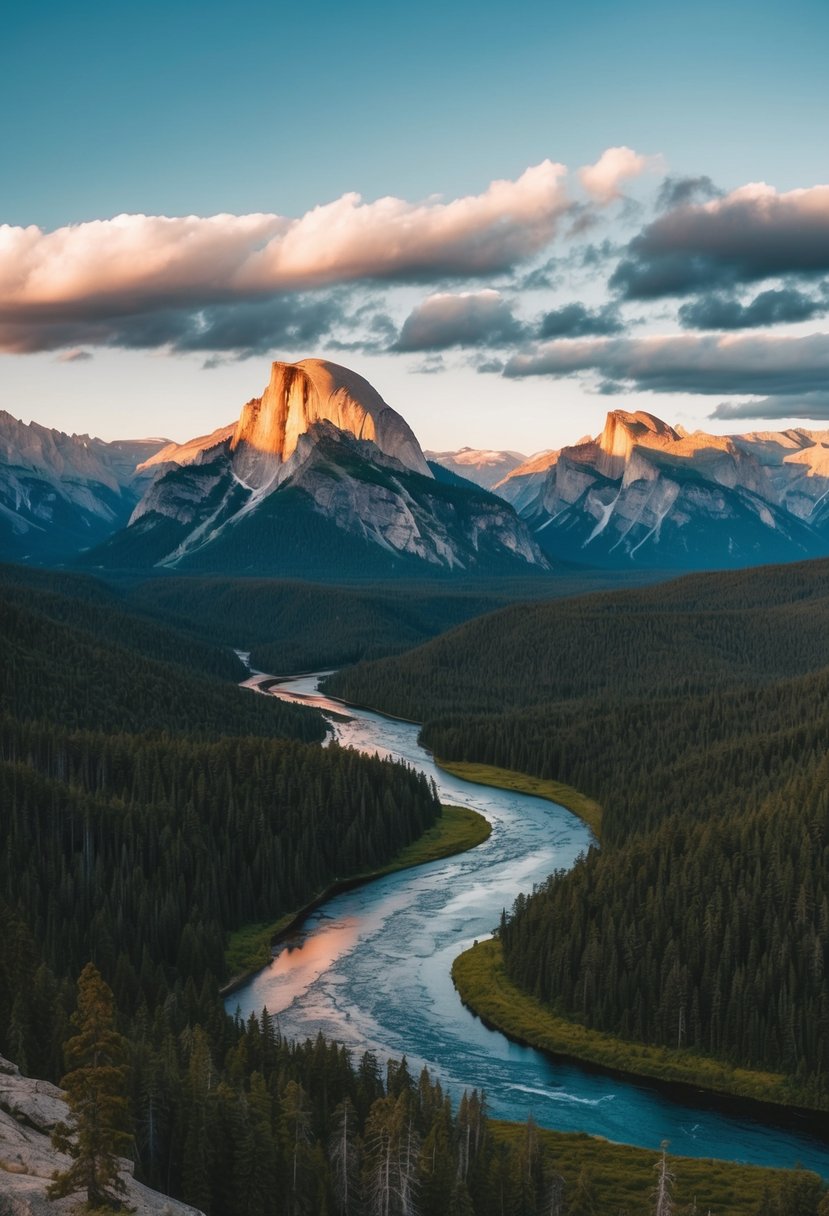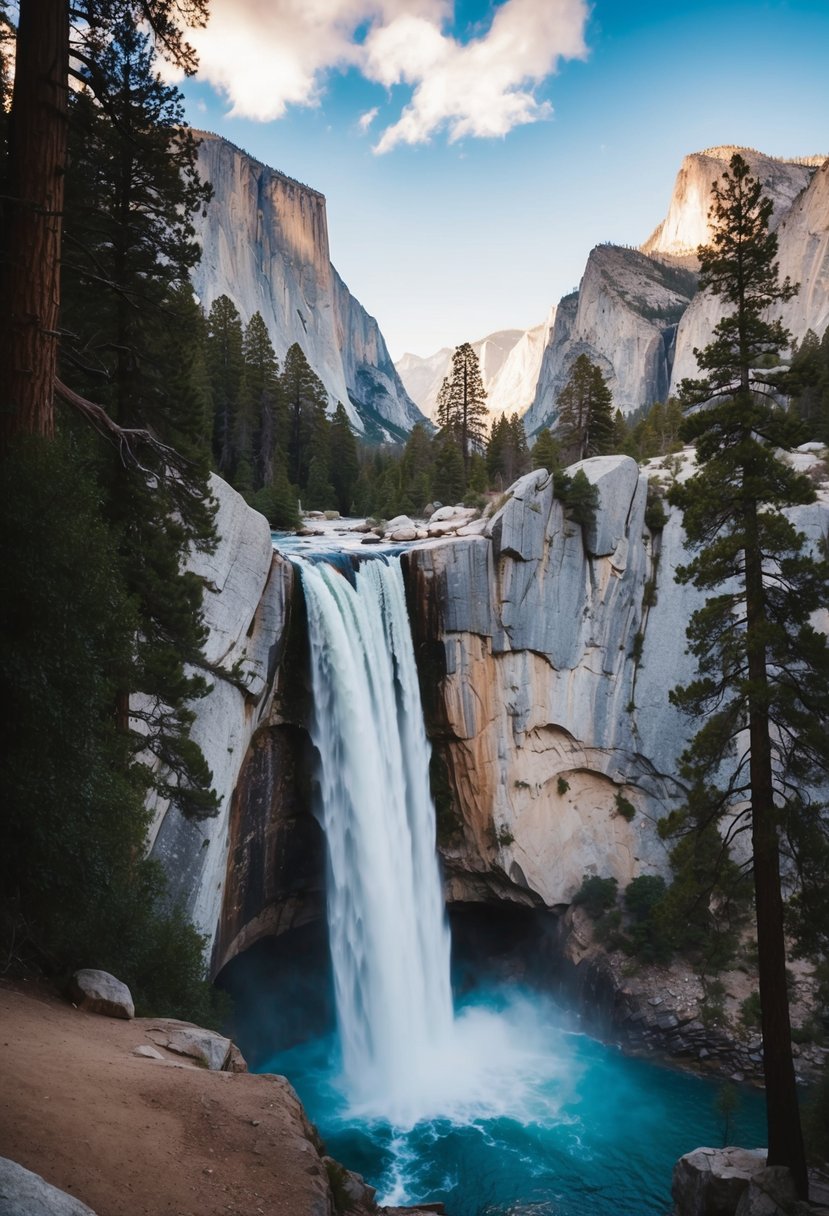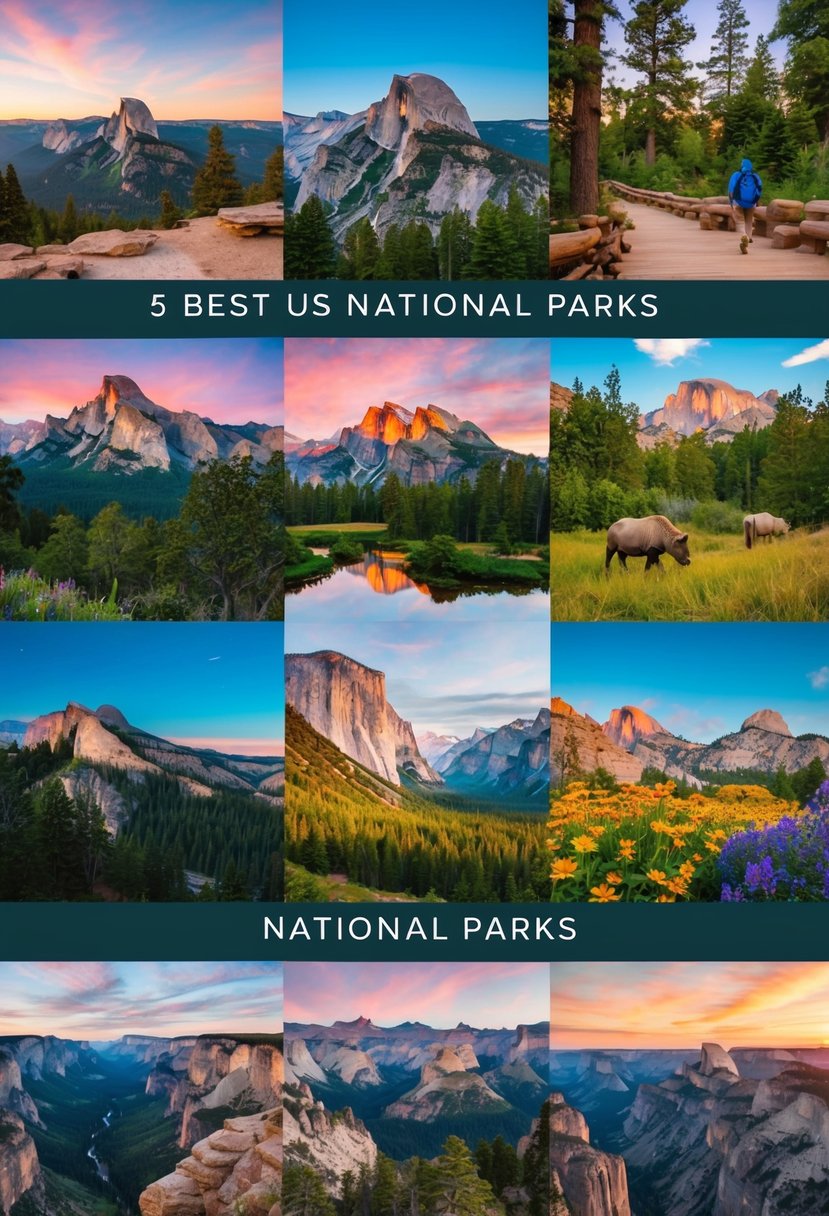Exploring the natural beauty of the United States is a rewarding experience, and the national parks offer some of the best opportunities to witness stunning landscapes and diverse wildlife. The five best national parks provide unique experiences and breathtaking views that appeal to both adventurous travelers and nature lovers.

Sure! Here’s your revised paragraph with the focus keyword “5 best national parks in the USA” naturally integrated:
From towering mountains to expansive deserts, the 5 best national parks in the USA showcase the country’s rich environmental diversity. Rankings can vary based on personal preference, but several parks consistently rise to the top due to their scenic beauty, recreational opportunities, and visitor experiences.
1) Yellowstone National Park

Yellowstone National Park is located primarily in Wyoming, with parts extending into Montana and Idaho. Established in 1872, it was the first national park in the United States and is famous for its geothermal features.
The park is home to iconic geysers, including Old Faithful, which erupts regularly. Yellowstone’s landscapes range from rugged mountains to vast forests and abundant wildlife.
Visitors can experience diverse activities like hiking, camping, and fishing. The park is also home to bison, elk, and grizzly bears, making it a prime location for wildlife watching.
Yellowstone attracts millions of visitors each year, drawn by its natural beauty and historical significance. Its role as a pioneer in conservation remains influential today.
For more information about national parks, you can check out the rankings and visitor tips found in various resources like More Than Just Parks.
2) Yosemite National Park

Yosemite National Park is located in California’s Sierra Nevada mountains. It is famous for its stunning granite cliffs, waterfalls, and diverse ecosystems.
The park covers over 750,000 acres, offering numerous hiking trails and breathtaking views. Iconic sights include El Capitan and Half Dome.
Yosemite is also home to several waterfalls, including Yosemite Falls, which is one of the tallest in North America. Visitors enjoy exploring the lush meadows and giant sequoias.
Wildlife is abundant here, with deer, foxes, and various bird species often spotted. The park attracts millions of visitors each year, making it one of the most popular national parks.
Yosemite offers camping and lodging options, allowing guests to immerse themselves in nature. The park’s rich history and cultural significance add to its appeal for tourists and nature lovers alike.
3) Grand Canyon National Park

Grand Canyon National Park is one of the most famous national parks in the United States. Located in Arizona, it spans over 1,200 square miles. The canyon itself is about 277 miles long and reaches depths of over a mile.
Visitors enjoy breathtaking views of its layered red rocks. These formations tell a story of Earth’s history, dating back millions of years. The park offers numerous trails for hiking, allowing guests to explore its vast landscape.
The South Rim is the most accessible part of the park. It provides visitor services, viewpoints, and educational programs. The North Rim is less crowded, offering a more secluded experience.
Wildlife is abundant here, including deer, bighorn sheep, and various bird species. The Colorado River flows through the canyon, providing opportunities for rafting and kayaking. Grand Canyon National Park attracts millions of visitors each year, making it a must-see destination.
4) Glacier National Park

Glacier National Park is located in Montana and is known for its stunning landscapes. The park covers over 1 million acres of protected land.
Visitors can explore more than 700 miles of trails, offering a range of hiking experiences. The scenery includes towering mountains, deep valleys, and beautiful lakes.
Wildlife is abundant in Glacier National Park. Visitors may see grizzly bears, mountain goats, and various bird species.
The Going-to-the-Sun Road is a must-see, providing breathtaking views and access to key areas of the park. It is one of the most scenic drives in the United States.
The park is also home to numerous glaciers, which are a significant draw for many visitors. As climate change impacts these natural features, they are important to visit while still accessible.
With its natural beauty and diverse ecosystems, Glacier National Park offers an unforgettable experience for nature lovers.
5) Zion National Park

Zion National Park is located in Utah and is famous for its stunning red rock formations. The park covers over 146,000 acres of beautiful landscapes, making it a popular destination for outdoor enthusiasts.
Visitors can enjoy hiking, biking, and rock climbing. The famed Angels Landing trail offers breathtaking views for those who can tackle its challenging path.
The Zion Canyon Scenic Drive provides easy access to many key areas in the park. This road is especially busy during peak season, but it showcases some of the park’s most iconic sights.
Wildlife is abundant here, including deer, bighorn sheep, and various bird species. This diversity makes it an excellent spot for photography and animal watching.
Zion’s unique slot canyons, like The Narrows, are another highlight. Hikers can wade through the Virgin River while surrounded by towering canyon walls.
With its scenic beauty and outdoor activities, Zion National Park remains a top choice for nature lovers. It offers something for everyone, from serene landscapes to thrilling adventures.
Understanding the Ranking Criteria

Ranking national parks involves evaluating various factors. These criteria help to determine which parks are the most appealing to visitors. The most important aspects include popularity, natural beauty, and unique wildlife.
Popularity and Visitor Statistics
Popularity is often measured by visitor statistics. Parks that attract larger crowds typically rank higher due to their well-known attractions and amenities. Key metrics include:
- Annual Visitors: The number of people who visit each park each year.
- Social Media Mentions: How often a park is talked about online.
- Visitor Reviews: Ratings and feedback from those who have experienced the park.
The most visited parks, like Great Smoky Mountains and Yellowstone, commonly top the lists. These parks offer impressive sights and rich history that draw millions of visitors annually.
Natural Beauty and Scenic Value
Natural beauty plays a significant role in rankings. This includes the landscape’s aesthetic appeal and unique geological formations. Key elements considered are:
- Diverse Landscapes: Mountains, valleys, lakes, and forests enhance visual interest.
- Colorful Flora and Fauna: Seasonal changes contribute to a park’s charm throughout the year.
- Accessibility of Views: Scenic drives or overlooks that make stunning views reachable for all visitors.
Parks such as Yosemite and Grand Canyon stand out for their breathtaking views and dramatic formations. These parks provide unforgettable experiences centered on the beauty of nature.
Unique Wildlife and Biodiversity
A park’s wildlife adds another layer to its appeal. Unique species, national or regional significance, and biodiversity are key points of interest. Important factors include:
- Native Species: Presence of animals and plants unique to that region.
- Conservation Efforts: Parks that focus on preserving endangered species rank favorably.
- Ecological Diversity: The variety of ecosystems supports many living organisms.
For instance, Everglades National Park showcases a wide range of wildlife, from alligators to manatees. Such biodiversity attracts visitors eager to learn about and observe nature.
Planning Your National Park Visit

When visiting a national park, careful planning can enhance the experience. Knowing the best times to visit, following safety guidelines, and adopting sustainable practices are key elements to consider.
Best Times to Visit
The best time to visit national parks varies by location. For example, summer months are popular for many parks, offering longer days and warm weather. However, they can also be crowded.
Spring in parks like Yosemite showcases beautiful wildflowers. In contrast, fall provides stunning foliage in places like Acadia National Park.
Winter visits can offer solitude and unique activities, such as snowshoeing in Yellowstone. Travelers should keep in mind the climate and local wildlife activity to optimize their experience.
Guidelines and Safety Tips
Safety is crucial when exploring national parks. Visitors should always follow park regulations and stay on marked trails. This helps protect both the environment and personal safety.
Wildlife encounters can be thrilling, but it’s important to maintain a safe distance. For instance, staying at least 100 yards from bears and 25 yards from other large animals is advised.
Pack essentials like water, snacks, and a first aid kit. It’s also wise to check weather conditions before heading out, as storms can develop quickly in mountainous areas.
Sustainable Tourism Practices
Sustainable tourism helps preserve national parks for future visitors. One key practice is to follow the Leave No Trace principles. This includes disposing of waste properly and minimizing campfire impact.
Visitors should also consider using public transportation or carpooling to reduce emissions. Choosing eco-friendly accommodations and participating in park volunteer programs can further support conservation efforts.
Travelers are encouraged to stay informed about local ecosystems. This awareness fosters a deeper appreciation for the park’s natural beauty and encourages responsible behaviors.







